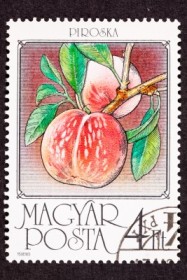Early in May, I got an email from Michelle of Red Adept Press. She wanted to know if I’d be interested in participating in the blog tour for Edward Lorn’s horror novel, Dastardly Bastard. I opened the Reviewer Pack and read less than three paragraphs of the novel before I replied with an enthusiastic “Yes!” My job was to read the book, write a review, and post it on the 28th of June – today! At this point, I can say three things with certainty:
1. Michelle is awesome, organized, and friendly!
2. Dastardly Bastard should be on your To Read list. Now.
3. There is a giveaway with tons of cool stuff you can win! To enter, all you need to do is follow this link and scroll down to the Rafflecopter form. Like the Bastard’s Facebook page to unlock more options to earn raffle points!
Gleefully Scheme: My Review of Dastardly Bastard
Memory is emotional shrapnel. If you’re lucky, it causes only occasional discomfort. If you’re unlucky, a fragment breaks loose, tearing and damaging.
The characters in Edward Lorn’s novel, Dastardly Bastard, are haunted by memory. Mark is a photojournalist, tormented by the deaths he has photographed. Donald is an author, who lost his beautiful girlfriend to an act of random violence. Lyle has lost his father to illness. Jaleel has lost his job, and his mind. Justine has lost her grandmother, Nana Penance, but gained the love of her life, Trevor.
All of them are going to Waverly Chasm for a guided trail hike. They aren’t alone. Something in the chasm feeds off of the emotional energy generated by reliving bad memories. Something in the chasm can create alternate realities, trapping people in their darkest memories. One by one, the thickening malevolence separates the hikers, eventually taking Trevor from Justine.
That was the bastard’s first mistake.
The second was letting Justine inside the darkness, because she isn’t going to loose the man she loves. Neither her own personal hell nor twisted visions of her Nana will keep her from Trevor. Justine brings the fight to the darkness, and in the process learns the connection between the evil in the chasm, a boy’s soul trapped there, and her own abilities.
Dastardly Bastard does not want for either action or creepiness, and Lorn manages to include plenty of both with unique verve. If that’s all Dastardly Bastard did, it would be a good book. Lorn takes things farther, though, by writing characters so very human, so very fallible, that you can’t help but connect to the human drama.
Dastardly Bastard isn’t good: it’s very good.
In fact, my only complaint is a nitpick that boils down to personal preference. In one pivotal scene, a monstrous amalgam of hikers is used as a weapon against two of the characters. In comparison to the horrifying nature of being confronted with their own bad memories, the amalgam-monster feels less intense, and therefore less compelling. My preference would have been to nix the amalgam-monster, and yet Lorn puts the incident to such good use, I’m inclined to point out, again, my nitpick says more about how I like to be scared than about any true weakness in the book itself. In fact, there’s a laugh-out-loud mix up between “mouses” and “houses” that makes the amalgam-monster scene one of my favorite in the book. Go on, get the book – you know you want to know what in the world I’m talking about here!
Memory is a dastardly bastard, but it is also our connection to how we became who we are. Lorn examines the damage memories do, but the point of Dastardly Bastard is that no matter how bad a memory is, there are other, good memories from which we can draw strength. If you enjoy your adventure stories spiked with darkness, then you don’t want to miss Edward Lorn’s Dastardly Bastard.
You’ll never see guided hiking trails the same again!
Bastard! Links!
Dastardly Blog Tour Page –> Giveaway! Twitter follows unlock extra points!
Lorn! Contact!
Ruminating On: (Lorn’s Blog) or on Twitter as @EdwardLorn!



